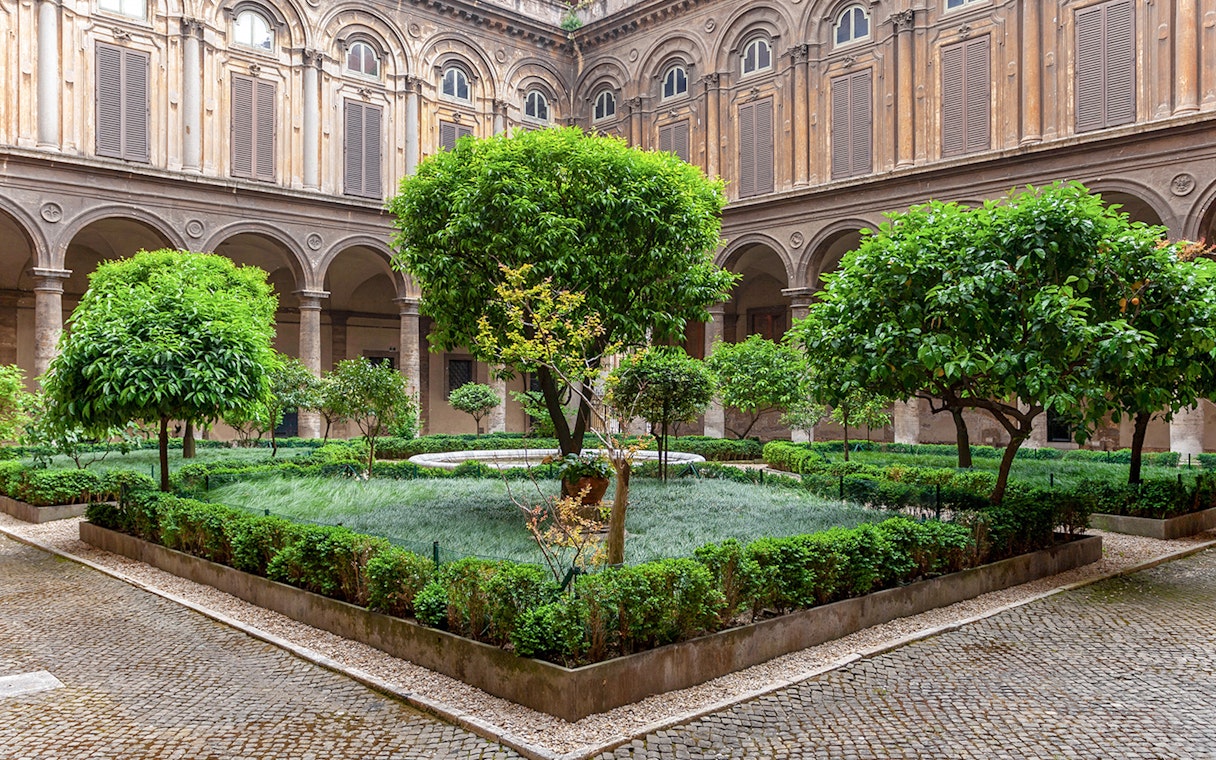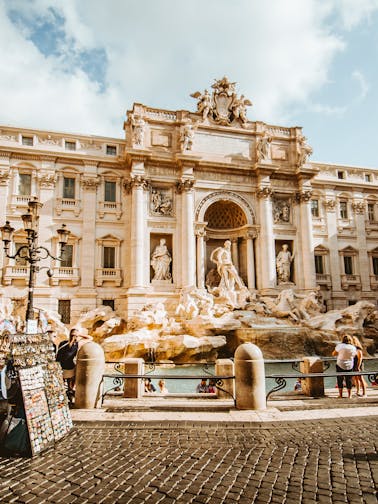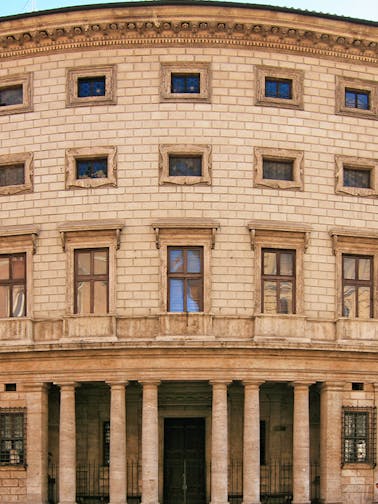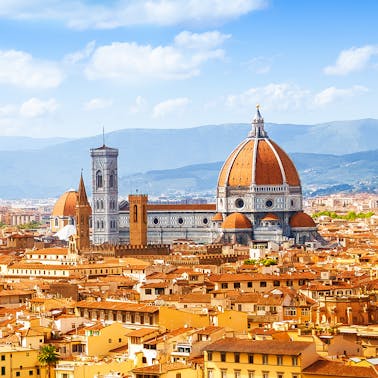Musei Capitolini
Explore Rome's Capitoline Museums with a view of the Roman Forum. Choose skip-the-line access or combo tickets for a comprehensive Roman experience.
39M+ travellers love us
Delivering best in class experience
Visitor's guide
Must-see highlights & key info

-
Skip the long lines with direct entry to the world’s first public museum, the Musei Capitolini, and dive straight into centuries of Roman history.
-
Find out about Rome’s rich past through a collection of famous sculptures and paintings, including the legendary bronze she-wolf.
-
Wander through Renaissance-era palazzos, filled with Rome’s most significant art and artifacts, all while enjoying breathtaking views of the Roman Forum.
-
Upgrade your experience with a host, a multimedia video or a Happy Hour ticket—enjoy a free drink at Terrazza Caffarelli while taking in one of the best views of the city!
More details
-
Skip the long lines with direct entry to the world’s first public museum, the Musei Capitolini, and dive straight into centuries of Roman history.
-
Find out about Rome’s rich past through a collection of famous sculptures and paintings, including the legendary bronze she-wolf.
-
Wander through Renaissance-era palazzos, filled with Rome’s most significant art and artifacts, all while enjoying breathtaking views of the Roman Forum.
-
Upgrade your experience with a host, a multimedia video or a Happy Hour ticket—enjoy a free drink at Terrazza Caffarelli while taking in one of the best views of the city!
-
Explore a museum, a garden, and panoramic views of Rome—all with one ticket.
-
Enjoy reserved access to the world’s first public museum, the Capitoline Museums, and take a look at centuries of Roman history.
-
Admire a stunning collection of sculptures and paintings, including the iconic bronze she-wolf, alongside rotating temporary exhibits.
-
Ride a unique glass elevator to the terrace of the Victor Emmanuel II monument for breathtaking, unobstructed views of Rome’s landmarks.
-
Wander through the Palazzo Venezia gardens, featuring manicured boxwood hedges, towering palms, and blooming magnolias.
More details
-
Explore a museum, a garden, and panoramic views of Rome—all with one ticket.
-
Enjoy reserved access to the world’s first public museum, the Capitoline Museums, and take a look at centuries of Roman history.
-
Admire a stunning collection of sculptures and paintings, including the iconic bronze she-wolf, alongside rotating temporary exhibits.
-
Ride a unique glass elevator to the terrace of the Victor Emmanuel II monument for breathtaking, unobstructed views of Rome’s landmarks.
-
Wander through the Palazzo Venezia gardens, featuring manicured boxwood hedges, towering palms, and blooming magnolias.
5% off
-
With this reserved entry ticket, explore the Capitoline Museums, the oldest public museum in the world.
-
Unlock Rome's rich history with a professional guide who will reveal the stories behind the famous figurines.
-
Start your tour with a multimedia presentation of Ancient Rome and get to know the city's history, the reconstructions of its monuments and more.
-
Explore classical artwork and sculptures, including the Capitoline Wolf, and visit temporary exhibitions.
More details
-
With this reserved entry ticket, explore the Capitoline Museums, the oldest public museum in the world.
-
Unlock Rome's rich history with a professional guide who will reveal the stories behind the famous figurines.
-
Start your tour with a multimedia presentation of Ancient Rome and get to know the city's history, the reconstructions of its monuments and more.
-
Explore classical artwork and sculptures, including the Capitoline Wolf, and visit temporary exhibitions.
-
Walk in the footsteps of emperors, gladiators, and saints as you explore ancient ruins, legendary prisons, and world-class museums in one seamless experience.
-
Dive deep into Rome's history with a detailed audio guide covering the Colosseum, Roman Forum, Palatine Hill, and Mamertine Prison.
-
Uncover the Colosseum’s rich history and legends with an engaging multimedia guide.
-
Explore the Capitoline Museums, the world’s first public museum, with a reserved ticket and immerse yourself in centuries of Roman history.
-
Marvel at an impressive collection of sculptures and paintings, including the bronze she-wolf, along with captivating temporary exhibitions.
More details
-
Walk in the footsteps of emperors, gladiators, and saints as you explore ancient ruins, legendary prisons, and world-class museums in one seamless experience.
-
Dive deep into Rome's history with a detailed audio guide covering the Colosseum, Roman Forum, Palatine Hill, and Mamertine Prison.
-
Uncover the Colosseum’s rich history and legends with an engaging multimedia guide.
-
Explore the Capitoline Museums, the world’s first public museum, with a reserved ticket and immerse yourself in centuries of Roman history.
-
Marvel at an impressive collection of sculptures and paintings, including the bronze she-wolf, along with captivating temporary exhibitions.
5% off
-
Craving the full Roman experience? This Explorer Pass is your golden ticket to over 40 landmarks, guided tours, and food tours.
-
Score entry to the Vatican Museums, Colosseum, and Pantheon while pocketing up to 42% savings compared to buying separate tickets.
-
Hop on and off buses and cruise tours whenever the mood strikes, rent bikes to zoom around, and indulge in food and wine tastings that'll make your taste buds sing.
-
Ditch the paper ticket hassle with the scan-and-go mobile pass. The app's itinerary planner means less time squinting at maps, and more time enjoying Rome.
-
Choose your adventure – 2, 3, 4, 5, 6, or 7 attractions – and activate your pass as you like. Your pass stays valid for 30 days after the first use.
More details
-
Craving the full Roman experience? This Explorer Pass is your golden ticket to over 40 landmarks, guided tours, and food tours.
-
Score entry to the Vatican Museums, Colosseum, and Pantheon while pocketing up to 42% savings compared to buying separate tickets.
-
Hop on and off buses and cruise tours whenever the mood strikes, rent bikes to zoom around, and indulge in food and wine tastings that'll make your taste buds sing.
-
Ditch the paper ticket hassle with the scan-and-go mobile pass. The app's itinerary planner means less time squinting at maps, and more time enjoying Rome.
-
Choose your adventure – 2, 3, 4, 5, 6, or 7 attractions – and activate your pass as you like. Your pass stays valid for 30 days after the first use.
10% off
- Enjoy reserved entry to two of Rome’s top attractions—the Doria Pamphilj Gallery and Capitoline Museums—while saving money and skipping long lines.
- Marvel at one of Rome’s grandest private art collections in the lavish Palazzo Doria Pamphilj, featuring masterpieces by Caravaggio, Raphael, and Velázquez.
- Explore the world’s first public museum, the Capitoline Museums, and admire legendary sculptures like the bronze she-wolf symbolizing Rome’s origins.
- Wander through Renaissance-era palazzos filled with historical artifacts and enjoy breathtaking views of the Roman Forum from the Capitoline Hill.
More details
- Enjoy reserved entry to two of Rome’s top attractions—the Doria Pamphilj Gallery and Capitoline Museums—while saving money and skipping long lines.
- Marvel at one of Rome’s grandest private art collections in the lavish Palazzo Doria Pamphilj, featuring masterpieces by Caravaggio, Raphael, and Velázquez.
- Explore the world’s first public museum, the Capitoline Museums, and admire legendary sculptures like the bronze she-wolf symbolizing Rome’s origins.
- Wander through Renaissance-era palazzos filled with historical artifacts and enjoy breathtaking views of the Roman Forum from the Capitoline Hill.
5% off
Pro tips to help you make a pick
Similar things to do in Rome
About Capitoline Museums
The Capitoline Museums (Musei Capitolini) are a group of museums located in Piazza del Campidoglio on Capitoline Hill, designed by Michelangelo. Housed in the Palazzo dei Conservatori and Palazzo Nuovo, the museums are connected by an underground corridor. Founded in 1471 by Pope Sixtus IV with a donation of ancient bronzes, the museums now display a vast collection of Roman statues, inscriptions, Renaissance art, and more, all closely tied to the history of Rome. Owned by the city, they offer a deep dive into Rome’s artistic and archaeological heritage.

Pope Sixtus IV, who established the Capitoline Museums in 1471, also commissioned the Sistine Chapel.

One of the museum's most renowned pieces is the Capitoline Wolf, a striking bronze statue depicting a she-wolf nursing the legendary twins Romulus and Remus, which serves as a powerful symbol of Rome's founding myth.

Michelangelo was the mastermind behind much of the design of the Capitoline Museums, including Palazzo Nuovo, but he passed away before the project was completed.
Why visit Capitoline Museums?
Plan your visit
Nearby cities to explore































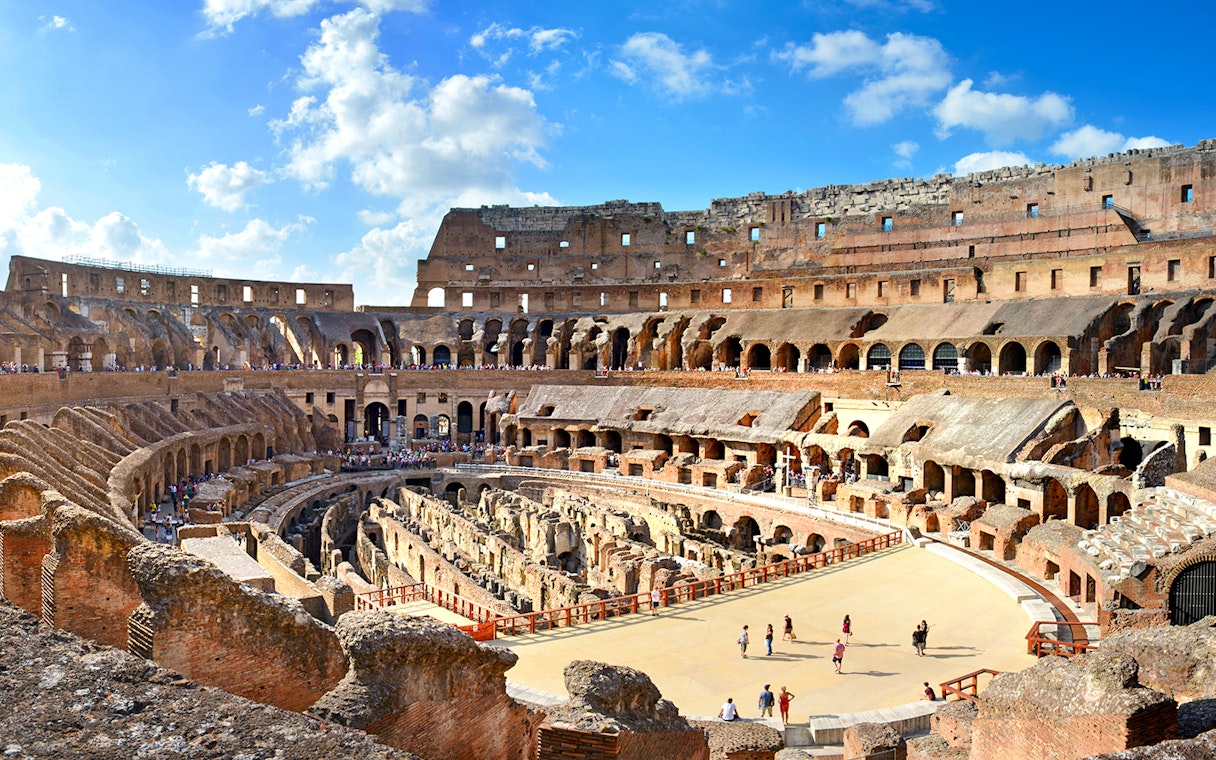

.jpg?auto=format&w=1216.3200000000002&h=760.2&q=210&crop=faces&fit=crop)




















